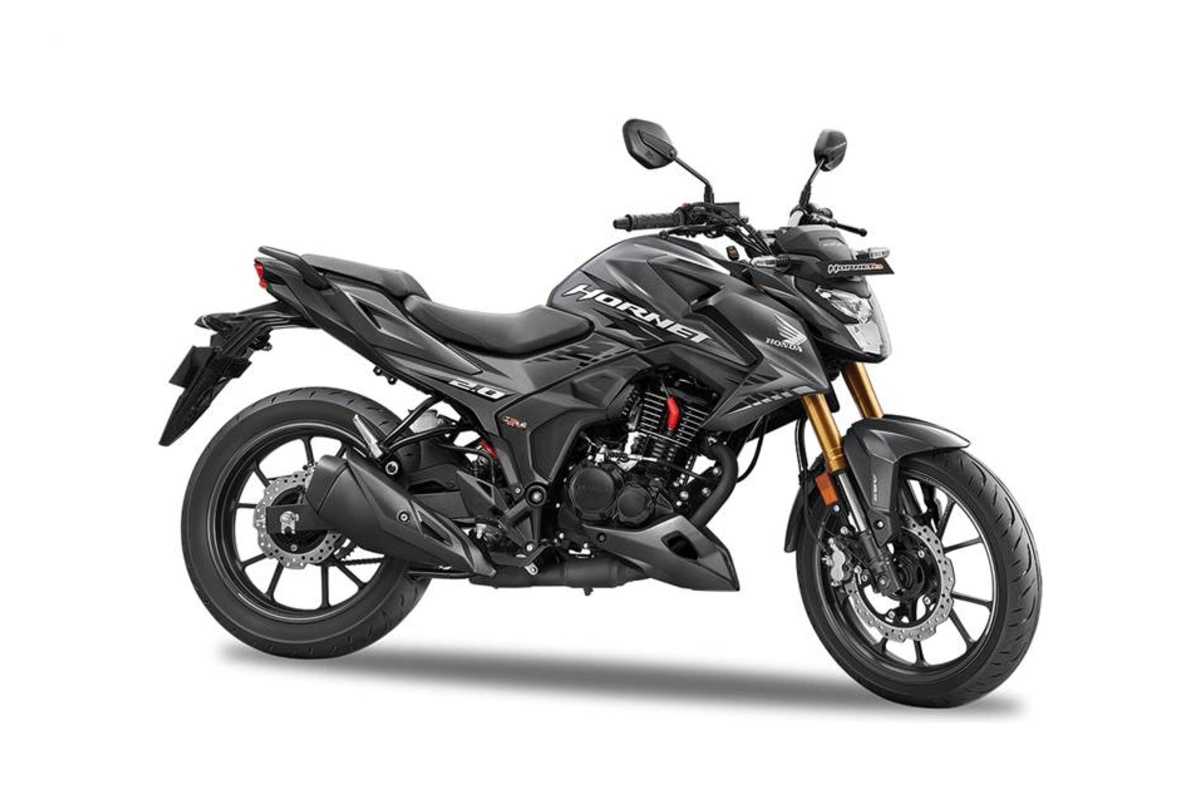Honda Hornet 2.0: 5 things to know

The new Hornet 2.0 marks Honda India's foray into the 180cc-200cc segment. In order to compete on an even footing, it sports aggressive styling, a new platform and a few segment-first features.
New platform for India
The Honda Hornet 2.0 uses a new platform for India. The bike does not share its frame and other components with the CB Hornet 160R. Instead it borrows hardware from the CB190R sold in international markets. A quick comparison reveals that both, the Honda Hornet 2.0 and CB190R use 184.4cc engines mated to 5-speed gearboxes. Both bikes also have the same 9.5:1 compression ratio. Other similarities come in form of the diamond frame, brakes, tyre sizes and the suspension. The kerb weight and wheelbase have minor differences – 2kg and 1mm, respectively.
Aggressive and handsome design
While the bike is quite similar to the CB190R mechanically, it’s quite different when it comes to the design. The motorcycle does share the CB190R’s silhouette, but it also carries the aggressive design from the CB Hornet 160R forward. Each body panel appears to have been restyled, including components like the headlight and tail-light. The first thing you’ll notice are the sharp tank extensions that tie-in well with the rest of the bodywork. Another design highlight is the faux vents, which are positioned below the pillion seat. A neat design touch is the X-shaped tail-light; this was a signature element of the previous Hornet in India.
Performance between 160cc and 200cc
Despite using the same air-cooled, two-valve engine as the CB190R, Honda has managed to churn out more power and torque for India. The Hornet 2.0 puts out 17.2hp and 16.1Nm as compared to the CB190R’s 15.8hp and 15.3Nm figures. The company managed this while also making the engine BS6-compliant. To give you an idea of where the Honda stands on paper, it is closer towards the powerful 160s in India than the 200s. For reference, the TVS Apache RTR 160 4V makes 16hp and 14.12Nm, while the Bajaj NS160 makes 17.2hp and 14.6Nm. While the Bajaj makes the same power figure, the Hornet 2.0 still has the advantage when it comes to torque.
However, 200cc offerings like the TVS Apache RTR 200 4V – with a 20.5hp/16.8Nm engine – and the Bajaj Pulsar NS200 – powered by a 24.5hp/18.5Nm unit – have a big advantage on paper. The BS4 Hero Xtreme 200R also boasts slightly higher performance figures, but it also comes at a significantly lower price than the Hornet. We will probably see the Hero’s price go up with the shift to meet BS6 norms, but it’s still expected to be considerably lower than the Honda Hornet 2.0’s price.
Promises sure-footed dynamics
The Hornet 2.0's biggest USP is its upside-down fork. This fork setup is a first in the segment and usually found on more premium motorcycles. T. In addition, the Hornet 2.0 also has the widest tyres in its segment. The 110/70 front and 140/70 rear tyres underline the fact that Honda has prioritised good riding dynamics, even if it might come at a small expense, in terms of fuel-efficiency.
Priced nearly on par with 200cc bikes
At Rs 1.27 lakh, the Hornet 2.0 comes uncomfortably close to more-powerful 200cc offerings like the NS200 (Rs 1.29 lakh) and RTR 200 4V (Rs 1.28 lakh). The Hornet 2.0 also misses out on features like a four-valve head, liquid or oil-cooling, a 6-speed gearbox, dual-channel ABS, radial tyres or Bluetooth connectivity, all of which can be found at this price point.
That said, it will come with Honda’s legendary brand name as well as the promise of punchy urban performance and good riding dynamics. However, specifications only tell part of the story and we can’t wait to find out what the Hornet 2.0 is like in action. Stay tuned.
All prices, ex-showroom Delhi
Also see:
Honda Hornet 2.0 image gallery



No comments: